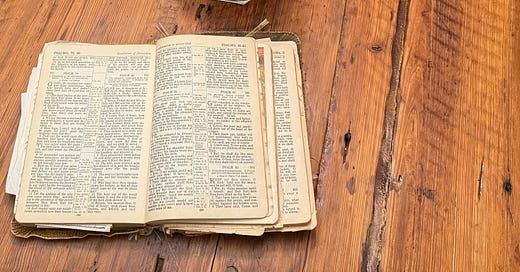I inherited a kerosene lamp and an old family Bible from my mother. Her ancestors read that Bible by the light of my kerosene lamp, that, and more from this aged lamp once so essential. Each time I look at it, I consider all that we have lost.
The kerosene lamp, legendary for its incendiary ways. No Western scuffle was complete without a knocked over kerosene lamp. As the saloon burned, men fought and bullets flew. Legend holds that Mrs. O’Leary’s milk cow kicked over a kerosene lantern, igniting a barn fire that spread into the Great Chicago Fire. Closer by, an overturned kerosene lamp burned a portion of Mount Carmel, South Carolina, during its early years.
Aside from conflagrations, the kerosene lamp earned its rightful place in history. We have to go back to the whaling days to ignite the lamp’s flame with whale oil. In 1846, a fellow with a tongue-twister of a name developed a substitute for whale oil—kerosene. Other men share credit for the rise of kerosene lamps. A product derived from fossil fuels, kerosene became the lamp of its day. (Kerosene was also known as paraffin. In Appalachia, folks refer to kerosene lamps as coal oil lamps.)
The kerosene lamp takes its place in an evolution of lighting technology that led to LEDs. I find the sooty old kerosene lamp to be far more romantic than blue-white LED lamps. As I wrote above, I see my great grandparents reading that tattered old Bible by flickering lamplight, a scene from a period movie. It led them to the outhouse by night and accompanied them to the smokehouse. At dusk it splashed a wavering pool of light across the porch. Consider it their flashlight. Consider it a relic, a fossil derived from fossils.
As I write I see my mother’s predecessors crowded around a kerosene lamp having dinner. How useful that weak, wavering light. No wonder kerosene lamps reigned throughout the 19th century, albeit defining social classes. The wealthy enjoyed gas lighting; the poor had their kerosene lamps.
Thomas Edison invented the light bulb in 1879, yet only half the homes in the United States had electric power by 1925. As electric lighting caught on in rural areas it caused quite a commotion. I’ve written before about Mom’s memory of the first light bulb. “People would gather in a home with the light bulb hanging from a wire, sit in a circle, and stare at the bulb until pink eye set in.”
Outside of antique shops I seldom see kerosene lamps anymore. Kerosene seems never to evaporate but the old lamps fade away. Travel the back roads, however, and you’ll see evidence of the days when kerosene ruled. At some abandoned country stores, you’ll see kerosene pumps. You’ll see old homes with kerosene tanks on supports. Those were the days of burn barrels, hand-dug wells, windlasses, old wooden buckets, gourd dippers, smokehouses, and outhouses. We traded our independence for landfills, water systems, electric grids, corporate farms, packing plants, and sewer systems and septic tanks. Seems a bad deal to me.
The kerosene lamp brought light to a dark world. Though dim and dusky, the kerosene lamp gave old timers a light for which they were thankful. Whaling captains? Not so much. Thanks to kerosene they had to find new ways to make a living, just as we sought wholesale change and it found us, found us good.






One of my favorites!
Jack and I had several kerosene lamps when we moved to Cha[in in the 70's and they were mighty helpful when several snow storms knocked out electricity for days. We were thankful for our woodstove and lamps to keep our family going. Blessings to you on this Father's Day. We were also also very thankful when the electricity came back on. Love your stories.